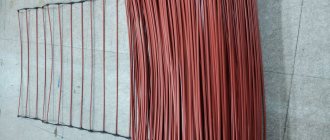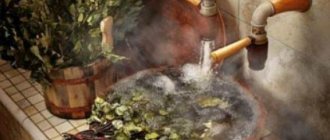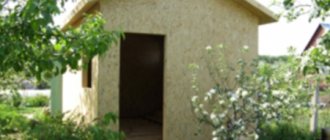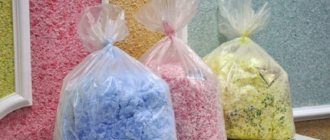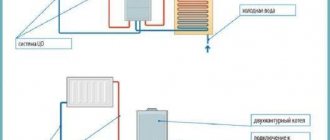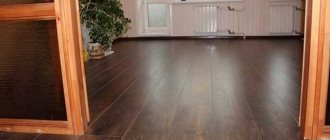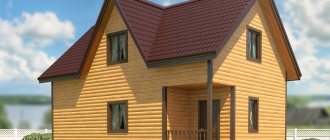December 31, 2019
Pellets are small-sized (diameter 4–8 mm, length 0.5 to 7 cm) cylindrical wood pellets, manufactured using special equipment and intended mainly for heating. In Western European countries, pellets have long been successfully used for heating cottages and country residences. In our country, this product became popular not so long ago. One of the main advantages is the environmental friendliness of the raw materials. An important advantage and ability to use pellets in automated systems: loose granules are poured into a special tank and fed into the boiler in an automated way, without any human participation in this process. This is a significant advantage over other types of solid fuel: chopped wood, coal, briquettes, which regularly need to be added manually to the stove to maintain the combustion process. Fuel pellets retain heat well, which means that your house or apartment will always be warm and comfortable.
Fuel pellets
A low degree of humidity contributes to the rapid combustion of raw materials, high efficiency and heat transfer, and the high bulk density of pellets simplifies transportation and storage, and increases the operating time of the boiler on one load.
What are pellets?
Pellets
- This is a granular type of solid fuel of a cylindrical shape, made from compressed waste from agricultural production and the woodworking industry. The main materials for the manufacture of fuel pellets are:
- sawdust, wood chips, bark, slabs of coniferous and deciduous (the best option) wood species;
- peat;
- sunflower husks (the most common solution), rapeseed (the best option), straw of various grain crops, corn, husks, cake and much more;
- charcoal;
- household waste.
The base binder is a substance of plant origin - lignin, a natural polymer contained in almost any plant, capable of being plasticized during granulation under the influence of a sufficiently high operating temperature.
Main advantages
Pellets are cylindrical granules with a diameter of 4−10 mm and a length of 15−50 mm. Various natural materials can be used as raw materials for their production. Most often, do-it-yourself pellets at home are made from the following raw materials:
- Waste from wood processing enterprises - sawdust pellets are the highest quality.
- Bark, branches, as well as dry pine needles and foliage.
- Waste from the agro-industrial complex.
- Peat - the use of this type of fuel allows you to achieve maximum heat transfer.
In this video you will learn how to make a briquette press:
The quality of granules largely depends on the raw materials used. It is best to use fuel made from sawdust. Since wood waste in premium fuel has a high degree of purification, it is quite difficult to produce it yourself.
Also, industrial varieties may contain a certain amount of impurities - bark, pine needles, leaves. They have a higher ash content, but the energy intensity remains high. To produce pellets at home, various types of woodworking and agricultural waste are most often used.
Among the main advantages of this type of fuel are:
- The content of harmful substances is minimal, and during its combustion, carbon dioxide and water vapor are mainly released.
- Can be used in long-burning boilers.
- Doesn't require much storage space.
- Since there is no need to use chemical ingredients during the production process, the risk of allergic reactions is minimal.
- Has a high heat transfer rate.
- Pellet fuel is not subject to internal decay processes, which eliminates spontaneous combustion.
This type of fuel has many advantages
Production of thermal granules
The process of producing wood pellets can be divided into industrial and artisanal production.
Factory production
The technological process of producing fuel pellets in a factory consists of several stages using special machines:
The raw material enters the large parts shredder to produce wood chips.- This material in the drying chamber, under the influence of hot air, is freed from excess moisture. Normally, it is necessary to achieve 10% moisture saturation for further production.
- The dried mass enters the apparatus for grinding it into wood flour.
- The wood grinding is delivered to the pressing unit. It is a mechanism consisting of two drums rotating in different directions with perforated walls and a pressing shaft that squeezes the contents of the chamber through the holes in the walls. The entire process of obtaining high-quality material occurs under the influence of high temperatures, reaching values of 3000C. This temperature is necessary to separate lingin resin from the raw material. It produces bonding of the composition.
- The resulting granules at the next stage undergo a cooling process using cold air. At the same time, this air flow cleans the material from unbound wood flour and sends it for recycling. The granules in their mass are pure objects.
- The final stage of production of fuel pellets is their packaging in sealed plastic packaging.
Independent production
Wood pellets can be produced with your own hands using two machines:
- Converter of large pieces of wood into sawdust.
- Pressing machine. It consists of a heavy shaft with gears at the ends and a pressing chamber. At its base there is a perforated sheet of metal. The shaft is driven by an electric motor. When rotating, the gears further crush the raw materials. Under pressure, material in the form of granules is extruded through a perforated sheet. The friction produced by the gears on the sawdust causes the wood to heat up and release resin to bond the substance.
Advantages of heating with peat briquettes
As buyers who have already used this fuel to heat their homes have noticed, with proper air supply, such briquettes maintain heat for about ten hours . This is very convenient because at night you will not need to add additional raw materials. It is estimated that one ton of peat briquettes generates the same amount of heat as four cubic meters of good quality wood.
It is also possible to emphasize a number of other advantages that show good performance, thereby allowing this type of fuel to conquer new markets.
- Peat briquettes can be used for heating all types of stove equipment.
- After combustion, only one percent of the ash from the total mass of raw materials remains from the peat briquette.
- When heating, little soot and smoke are released, so the chimney is not subject to clogging.
- Heat transfer during heating ranges from 5500 to 5700 kcal/kg.
- Affordable price.
- This fuel is convenient to transport.
- Peat blocks do not lose their combustible properties for several years.
- Natural product with minimal impurities.
Gardeners and gardeners have found another use for the waste that remains after burning peat briquettes. It turned out that the ash remaining after the heating process is a good phosphorus and lime fertilizer.
Pellet classification
The main regulatory document predetermining the production of pellets is the European Union standard EN 14961-2, adopted in January 2011, on its basis an international quality certificate EN Plus is issued. There are three classes of granular fuel:
- ENPlus-A1 – best premium quality, diameter up to 8.00 mm, ash content up to 0.70%, another name is “white granules”;
- ENPlus-A2 – with ash content up to 1.50%, also called industrial granules, can consist of mixed wood species;
- EN-B – standard quality, with ash content up to 3.00%, an alternative name for agropellets.
In terms of cost, the most expensive pellets are ENPlus-A1 class, the cheapest are EN-B class, it is better not to take substandard fuel.
Basic parameters of pellets
Pellets for heating are granules of white or shades of brown, with a length from 10.00 to 30.00 mm, a diameter of 6.00 and 8.00 mm, less common fuel with a diameter of 10.00 mm, the maximum diameter of the granules is 25.00 mm. The darkening of pellets is associated with the presence in the structure of the material of various non-combustible residues (dust, earth, and a number of others).
The main parameters of pellets are:
- ash content (the lower, the better and the less ash, so the boiler will have to be cleaned much less often);
- humidity;
- calorific value (ENPlus-A1 – 18.0 MJ/kg, ENPlus-A2 – 18.0 MJ/kg, EN-B – 15.0 MJ/kg).
- total length;
- degree of density;
- diameter;
- bulk mass;
- abrasion class.
Quality requirements
The main requirements for the quality of fuel pellets are:
- The granule should be even and smooth.
- No cracks in the granules, no warping or shedding.
- The granule should be tightly compressed.
- The finished product must have the correct percentage of moisture (it should not exceed 15%).
- It is desirable that the pellets be the same size (mainly manufacturers make fuel pellets from 5 mm to 70 mm in length, and from 6 mm to 10 mm in diameter) regardless of the type of fuel pellet.
- The absence or minimum content of impurities (dust, sand) in the finished product, which deteriorate the quality of pellets.
- Color. For wood fuel pellets, it should be light (lighter is higher quality), since the fewer dark or brown inclusions in the pellet, the less bark and impurities it contains. In peat and plant granules it is dark gray or black.
- There should be no fungus or mold on the pellets.
- There should be no chemicals.
We recommend: Operating principle of a gas reducer: types, why it is needed and technical characteristics
Technological process for making granules
Coarse crushing. Crushing machines are used to grind sawdust into flour. Then the material is dried until it reaches 10% humidity, for which special drums are used.
Second grinding. Hammer mills crush raw materials to a maximum size of 6 mm.
dried until it reaches 8-10% humidity in drum or belt dryers.
Pressing. The raw materials are heated to 120 °C and subjected to pressure from a special granulator press. Typically this machine uses several types of dies:
- cylindrical;
- flat;
- roller;
- screw
This miniature granulator press has a productivity of up to 250 kg/hour.
Cooling . This process is performed as needed.
Packaging. According to calculations, to obtain one ton of pellets, you need to have 2.5 m³ of sawdust. Household pellets are packaged in bags with a maximum weight of 30 kg. Such packaging with industrial granules can weigh up to 1000 kg.
A small line, which is based on the OGM-1.5, costs approximately $55,000. The price of industrial equipment will be much higher. In this case, performance comes first:
- 700 kg/h – $132,000;
- 2000 kg/h – $196,000.
Classification and scope
Peat briquettes for heating are classified according to the type of mechanisms by which they are produced. The type of finished product depends on this, which includes several different forms:
- Rectangles or bricks with rounded corners. They were first produced in Germany. Produced by impact-mechanical or hydraulic presses.
- Cylinders come in different lengths and diameters and can be equipped with a round hole. They are affordable, but have low resistance to moisture.
- Hexagons with a radial hole in the central part. Their production technology involves the use of thermal firing. Thanks to this, the products are not damaged during transportation and are resistant to humid environments. Produced using extruder technology.
Given their ease of use, ease of storage and safety, briquettes are ideal for heating rooms in country houses, saunas and baths. They are indispensable on camping trips and for cooking on barbecues and grills. When used in boiler rooms, it should be taken into account that briquettes are used only in solid fuel boilers.
Pellet varieties
- Higher. This fuel belongs to the premium class. Such granules received an additional name – “white”. Since high-quality raw materials are used in their production, the cost of fuel is higher than other types. They are usually available in several colors: light brown, white, beige. Such granules are made from oak or beech sawdust. The raw material can be any solid wood.
- Industrial. Since the granules contain tree bark, they differ from others in their dark color. Pellets have a high calorific value, but their ash content exceeds 0.7%. The price of industrial pellets is slightly lower than the cost of premium combustible substances.
- Agropellets , the so-called standard. They are one of the types of industrial granules. For production, buckwheat husks or sunflower stems are used. The pellets are dark in color and their ash content is more than 3%. They are characterized by low calorific value, not exceeding 15 MJ/kg. These granules are inexpensive and are used as fuel for industrial boilers.
When choosing pellets for heating your home, you must take into account the following important points:
- availability of a quality certificate indicating the composition of the granules; it must meet current standards; It is better if such pellets comply with European standards such as ENplus;
- calorific value (not less than 4200 kcal/kg);
- ash content (no more than 0.5-1%);
- humidity (no more than 8-14%).
Production and sale of fuel pellets (wood pellets) in Moscow and the Moscow region!
By default, pellets are produced without the use of any chemical additives, which ensures their environmental friendliness. Figuratively speaking, this is the same firewood, but converted into a form convenient for transportation, storage and use. The composition of the combustible substance is the same for both wood pellets and firewood; in addition, both contain water and non-combustible components. The fundamental difference between pellets and ordinary firewood, in addition to the already mentioned form, lies in the ratio of the listed components (wood fiber, water, ash, etc.). At the same time, the connecting component in pellets is a natural component of wood - lignin, which during the technological process, when certain temperatures and pressures are reached, “glues” wood particles together, which makes it possible to produce pellets of a given shape.
If the temperature, pressure and humidity during the molding of pellets meet the technological requirements, then the pellets will have a smooth and shiny surface without significant longitudinal cracks. Such a surface indicates, first of all, that lignin has “fixed” the shape of the granules properly.
Lower regulated pressure and temperature will not cause a dark shade of pellets - the granules will remain white, but will not hold their shape, will turn out soft and will subsequently crumble during each transshipment (from the factory to the warehouse, from the warehouse to the seller, etc.), which, in - firstly, it will reduce their quantity (dust cannot be used effectively), and secondly, it can significantly reduce the efficiency of the heat generator.
Too high a granulation temperature will cause the pellets to burn, becoming dark in color and no longer white. However, this will not deteriorate their quality; they will remain solid.
Thus, judging the quality of granules by their color in the considered aspect can only be assumed. In addition, pellets with excellent strength and abrasion resistance, smooth and shiny in appearance, may contain non-metallic inclusions, which subsequently, due to intense slag formation during their combustion, can disrupt the normal operation of the consumer’s heat generator, even leading to emergency shutdowns.
Note that the hardest pellets are obtained from hardwood, but their production requires the use of higher-class equipment than when producing pellets from coniferous wood.
The raw material for their production can be commercial wood, bark, sawdust, wood chips and other waste from logging and wood processing. It is the type of raw material used that determines the color of the final product.
Dark-colored granules can be made from waste obtained, for example, from the recycling of old wooden structures, while in terms of such a parameter as ash content, such pellets may well meet strict Western European standards.
The use of bark-containing logging waste (saws, etc.), which always have mineral inclusions, for the production of pellets leads to the coloring of the pellets in a “cappuccino” color. The reasons for the appearance of mineral inclusions in pellets are different, in particular, sand can get stuck in the bark of a tree when it is transported by drag during logging or when logging and wood processing waste is taken directly from the ground.
Certification laboratories usually do not separate the causes of the appearance of ash and slag, but write in the conclusions: “Ash content”. However, slag, unlike ash, which partially flies into the pipe, accumulates in the heat generator burner and can render it inoperative. Ash is a mineral product obtained by burning stem and other wood. It makes up no more than 1% of the mass of the stem wood and no more than 3% of the mass of the bark. Thus, even in the case of producing pellets from a mixture of sawdust containing 85% sawdust from stem wood and 15% sawdust from pure bark, the total ash content of the produced pellets will not exceed 0.5%, which corresponds to Western European standards. These pellets can be distinguished by brown inclusions, although the color, as already noted, may also indicate incorrect settings of the granulator press (pellets burn).
Raw materials from wood recycling (making furniture, windows, etc.) are cleaner (compared to raw materials from primary processing), and pellets made from it are white-yellow in color, but in this case the question arises of the presence of impurities in it in the form of artificial components and resin-containing materials used in the production of furniture, and then there is no need to talk about the environmental friendliness of the product. An indirect sign of the presence of such impurities may be red scale on the grates of the boiler (heat generator) after the combustion of such pellets.
Transportation and storage conditions, in which wood pellets are not protected from environmental influences (sunlight, humidity, etc.), not only worsen their properties, but also affect the color of the pellets, which becomes darker. No matter how high the quality of the produced pellets, no matter how light, high-intensity shade they have, no matter how stringent the standards they meet, inadequate transportation and storage conditions will make the manufacturer’s desire to sell its products as a premium product impossible.
Thus, the color of pellets, neither legally nor in fact, can serve as an unconditional indicator of their high quality and belonging to the premium segment. The magic of the set of words “white pellets are a premium product” should not influence the rational choice of the consumer, for whom the most important criteria for evaluating wood pellets should be their size, bulk density, humidity, ash content, calorific value, sulfur, nitrogen, chlorine content etc., as well as abrasion resistance. And the main task of the manufacturer and supplier is to ensure the stability of these parameters.
How to distinguish high, premium quality pellets from substandard fuel?
When purchasing pellets, you need to pay attention to:
- the surface of the material must be smooth, shiny, without signs of deformation (swelling and microcracks);
- diameter (this parameter is established by the standards, the minimum value is 4.00 mm, the maximum is 10 mm, also standard are fuel pellets that have a diameter of 6.00 and 8.00 mm, please note that a pellet boiler operates on pellets of a certain fraction);
- length (this parameter should be about 20.00 - 30.00 mm, this is the optimal value, although the equipment can work on pellets with a length of over 50.00 mm);
- smell (the granules should have a slightly sweet smell of freshly prepared glue, this is a clear sign of excellent quality);
- color (it is important to remember that the highest quality pellets are white or slightly cream-colored, agropellets are predominantly dark, and in wood pellets, dark color indicates that bark, other impurities have been added, or wood species have been mixed);
- dust (there should be a minimum amount of dust on pellets, so it is better to buy fuel in sealed packaging);
- impurities (the presence of non-combustible impurities in the granules themselves can only be checked by burning them and determining the residue in the form of solid particles).
How to check the quality of boiler pellets
The chemical quality of the pellets is also very important; if they are made using chemical glue, then this is very harmful to health. This parameter is checked by placing the granules in water. If the granule sank, quickly became wet and disintegrated without precipitation (sand, stones, other impurities), then it is of high quality. If glue was added to the granule, then it will never get wet and will not dissolve in water; moreover, it will not even sink.
When purchasing pellets, you must ask the seller for a certificate that specifies all the necessary parameters of the pellets - this is the only way to be sure that you have purchased a quality product. Moreover, it is better to buy this product from a large, trusted manufacturer who never experiments and produces products from the same raw materials, dealing with the same trusted suppliers.
Making at home
The technology for producing pellet fuel seems simple, but at home its production is not always cost-effective and quite difficult. One of the main problems when creating a production line in a private sector is the lack of special equipment - a granulator. You can find household models on sale, but their cost is quite high.
Of course, you can make a pelletizer yourself , but this is a difficult task. It is not enough to produce all the parts needed for the machine: precise adjustment will be required during assembly. Before you start making a pellet press with your own hands, you need to properly evaluate your existing skills.
The second problem is the availability of materials for making pellet fuel. It is worth thinking about the possibility of producing granules at home only if it is possible to regularly obtain raw materials, and it should be free or have a minimal cost. Only in such a situation will it be possible to provide yourself with high-quality, environmentally friendly fuel.
It should also be said that the use of machines with flat dies allows one to avoid the secondary crushing cycle. They are equipped with toothed rollers, thanks to which the chips are ground to the required state. It is impossible to do without drying sawdust , and to solve this problem, many craftsmen assemble drum dryers of a simple design. You should also remember that the best material for making pellet fuel is coniferous wood. It is not possible to make pellets from poplar, linden or willow.
Pellet production
Turnkey pellet production line
The technological process consists of several stages at which the source material, undergoing various processing, is fed into molding machines:
- First, chips or other waste are crushed , depending on the type of pellets produced. The material is crushed to such an extent that there will be no particles in the structure exceeding 1.25 cubic meters in volume. see. Such raw materials will dry out faster and will be allowed for further actions.
- At the second stage, the semi-finished product is dried. Technological parameters do not allow the use of crumbs with a moisture content exceeding the norm above 8-12%. Dryers are drum and belt machines used according to the type of raw material being produced.
- After drying, the source material undergoes another stage of crushing to obtain smaller granules that are better amenable to pressing.
- The material enters the press after sorting: 4 mm, granules for the production of industrial pellets, and no more than 1.5-2 mm for first-class raw materials.
- Water treatment. This stage of technological production allows you to bring the chips to “standard”. In essence, this is another drying step in which the original product is given a nominal percentage of moisture that is ideal for bonding.
- Pressing is carried out in various devices, with a flat or cylindrical matrix. At the end of the process, the workpieces are cooled, after heating in the machines to 70°-90°C.
- The last stage is sifting , sorting and packaging of the finished product. This is necessary to separate broken pellets from good ones.
Waste-free production lies in the fact that substandard granules are subjected to repeated processing.
Homemade granulator
To make a machine for producing pellets with your own hands, you will need a drawing. Often problems arise already at the stage of searching for it, since masters rarely share the secrets of their work. Some of them offer to purchase a ready-made machine from them, but its cost will be high. To create a homemade granulator you will need to make several main components.
We recommend: How to paint an OSB board on the outside - review and step-by-step instructions
One of the main ones is the matrix. It should be warned that it will be quite difficult to do it yourself, since you will need professional equipment and good skills in working with it. A similar matrix is used to make mixed feed, and it’s worth trying to purchase it.
If this is not possible, then a round blank will have to be cut from metal with a thickness of 20 mm. Then a mounting hole with a groove is marked on it and drilled for fixation on the electric motor shaft. Holes for pressing should have a conical shape. It is impossible to make them without a special cutter. It should also be said that the outer diameter of the part can be any, and the larger it is, the higher the productivity of the equipment will be.
The second important component of the machine is powerful gear rollers. They are mounted on the shaft using rolling bearings. In addition, an axial hole must be made on the shaft for mounting on a vertical drive. The pressing force of the rollers to the matrix is adjusted using a nut.
The body can be made from pipe or welded from sheet metal. Its internal diameter must correspond to the size of the matrix, ensuring its rotation with minimal clearance. To simplify maintenance of the granulator, the housing should be made collapsible . To make a pellet machine with your own hands, you will need a gearbox. This unit is installed at the bottom of the equipment and is designed to transmit rotation to the working vertical shaft with a frequency of 70−100 rpm.
The matrix and rollers are mounted in the upper part of the granulator. The entire structure, together with the electric motor, is installed on a frame made of an I-beam, channel or angle. It is important to remember that the loads on the frame will be high, and it must easily withstand them.
This design of equipment for the production of fuel pellets is not the only possible one. Having sufficient skills and access to professional metalworking equipment, it is quite possible to make a granulator yourself. In such a situation, the main problem will be the search for accessible and cheap raw materials.
Comparison of pellet production technologies
Made from wood
Stages of wood pellet production:
- Coarse crushing of wood waste in a hammer crusher.
- Drying chopped wood in a drying drum.
- Fine crushing (bringing it to wood dust).
- Control of humidity in the mixer (if necessary, supply steam or water).
- Pressing and granulating fuel pellets in a granulator press.
- Cooling of finished cylindrical granules in a cooler (temperature 70-90°C).
- Packaging and packaging of finished products in bags.
From sawdust
The production of sawdust pellets proceeds as follows:
- Dry the sawdust so that its moisture content does not exceed 12%.
- Take a sieve and sift the sawdust so that no debris (small stones, leaves, etc.) gets into the granulator.
- Grinding sawdust in a hammer mill.
- If the humidity is below 8%, the crushed sawdust must be fed into the mixer (increase the humidity to 8-10%).
- Granulation of sawdust pellets.
- Cooling and drying of granules in a cooler.
- Packing sawdust pellets in paper bags.
From straw
Production of straw pellets:
- Straw chopping (length up to 4 mm).
- Re-crushing in a mill crusher.
- Drying in a tumble dryer.
- Control of the humidity of chopped straw in the mixer (water or steam supply).
- Pressing and granulation of straw flour.
- Cooling straw pellets in a cooler.
- Packaging of straw pellets.
From the slab
Slab pellets are produced as follows:
- Processing of slabs in a chipper (chip length up to 50 mm).
- Crushing wood chips in a hammer crusher.
- Drying slab chips in a drying drum (humidity from 8% to 12%).
- Fine crushing in a mill crusher (to the state of wood dust).
- Control of humidity in the mixer (if humidity is below 8%, steam or water is supplied).
- Granulation of slab wood flour in a granulator press.
- Cooling of cylindrical slab granules.
- Packing of slab pellets into bags.
From peat
The manufacturing technology for peat fuel pellets is as follows:
- It is necessary to lay out the peat so that it can dry naturally.
- It must be cleared of debris (plant roots, leaves, stones).
- Grinding peat in a crushing machine.
- Dry the peat mass in a dryer to a moisture content of no more than 12%.
- Re-grind (finely crush) in a crushing mill.
- Feed the crushed peat mass into a granulator press with a built-in mixer for peat granulation and steam treatment.
- Cool the peat pellets in a cooling column.
- Pack the finished fuel pellets into bags.
Production process
Pellet production is a multi-stage process that requires both material and time costs. But first of all, raw materials are delivered to the plant. Raw materials can be:
- Bark, sawdust, wood chips, and other logging waste.
- Agricultural waste: corn, straw, sunflower husks and others.
Pellets for heating boilers from sunflower husks
The production process consists of the following stages:
- Coarse crushing.
- Drying.
- Fine crushing.
- Mixing and water treatment.
- Pressing.
- Cooling, drying.
- Packaging.
Waste wood chips are used to make wood pellets
Primary crushing
It is also called coarse crushing. During the process, grinding occurs to dimensions of 25 x 25 x 2 mm. This process ensures rapid drying of raw materials to the required moisture content. Since such material is stored on a concrete floor to prevent mixing with sand and stones, it is fed into the grinder using a scraper device.
Shredding wood waste is the first stage in the production of pellets
Drying
Now the raw material has a moisture content of 15%, which is not suitable for the next stages, since it will not be pressed well. And pellets that contain so much moisture are not suitable for boilers. The optimal humidity range is from 8% to 12%, but the correct pellets have 10%. In order to dry the primary crushed raw materials, drum belt dryers are used. The choice of one or another drying method depends on the type of raw material, its quality and other factors.
Raw materials for the production of pellets with inappropriate humidity require additional moistening or drying
Note! This process is energy-intensive, because in order to dry 1 ton of raw materials, at this stage you need to burn 1 m³ of firewood. In order to reduce the cost of this process, bark or sawdust is burned into the dryer firebox.
Secondary (fine) crushing
In order for the press to work, the particle size should not be larger than 4 mm, so repeated grinding is used. For this purpose, hammer mills are used, which are excellent for crushing fibrous shavings and sawdust.
Sawdust prepared for re-crushing
Water adjustment, pressing
Since the raw material was dried in the previous stages and currently has only 8% moisture, it will be difficult to glue it together. To do this, the material is moistened with water or steam. The latter is necessary when pressing hard wood waste. If the raw material is soft wood, then additional moisture is quite enough.
As for pressing, equipment for pellets has different matrix shapes - flat and cylindrical. The diameter of the matrix itself is about 1 meter, and the power is measured at 500 kW.
Presses from some manufacturers do not require additional steam due to their design features
Cooling, packaging
In order to obtain high-quality pellets, they must be well cooled. This process helps dry the granules. After the press they have a temperature of +70-90 ⁰С. After this process is completed, they are sifted and packaged.
Since pellets are loose raw materials, they are often stored in bulk, but this can negatively affect the quality of the material, as it will gain moisture. Therefore, manufacturers package and recommend storing fuel in large big bags. The highest quality pellets that you can buy are packaged from the factory in 20 kg bags.
The packaging of granules depends on the storage system that the consumer has: in bulk, in big bags or in small packages
Comparison with other types of solid fuel
The strength of pellets is their progressiveness compared to firewood, coal and even briquettes. Imagine a solid fuel boiler operating in the same mode as a gas one. Only even safer, because pellets do not explode like natural gas.
The difference between gas and pellet heating is expressed in several points:
- the supply of granules must be replenished;
- once a week the boiler is stopped for cleaning;
- when the pellet heat generator is operating, you can hear the noise of granules pouring down a plastic pipe;
- the use of this fuel is not related to the work of public utilities and various inspections;
- Heating equipment that burns pellets is automated no worse than gas equipment.
If we compare granular waste with firewood or coal, the latter only benefit in terms of cost.
In return, they cost the homeowner comfort and time since wood or coal heating requires constant attention. Even a long-burning boiler needs to be “fed” 2 times a day and constantly cleaned, but a pellet boiler works non-stop for weeks.
Comparison results based on other criteria also speak in favor of heating with pellets:
- Burning pellets is safer than wood and coal. Boilers equipped with pellet burners practically do not suffer from inertia, like conventional solid fuel ones. When the required coolant temperature is reached, the burner turns off and the fuel supply stops. Only a small handful of granules burns out.
- The room with a pellet boiler is clean, there is no smell of smoke, which is present when the firebox is loaded with coal and firewood. Installation of a buffer tank is at the request of the owner. Pellet heat generators can do without a battery to dump excess heat.
We recommend: Foil insulation: types, properties and possibilities of use
A comparison of the technical characteristics and costs of different types of biomass fuel is presented in the table:
| Fuel | Heat output 1 kg, kW | kW thermal plant efficiency, % | Real heat transfer 1 kg | kW Price 1 kg in Russia, rub | Price 1 kg in Ukraine, UAH | Cost of 1 kW of heat in Russia, rubles | Cost of 1 kW of heat in Ukraine, UAH | Fuel ash content, % |
| Freshly cut firewood | 2 | 75 | 1,50 | 2,25 | 0,75 | 1,50 | 0,50 | from 3 to 10 |
| Dry firewood with humidity | 4,10 | 75 | 3,08 | 3,00 | 1,00 | 0,98 | 0,33 | up to 2 |
| Briquettes | 5,00 | 75 | 3,75 | 5,50 | 2,00 | 1,47 | 0,53 | until 3 |
| Agropellets | 5,00 | 80 | 4,00 | 7,00 | 2,00 | 1,75 | 0,50 | until 3 |
| Anthracite coal | 7,65 | 75 | 5,74 | 10,00 | 3,80 | 1,74 | 0,66 | from 15 to 25 |
The actual heat transfer of energy carriers may differ from the theoretical one and depends on the efficiency of your heating equipment and the humidity of the raw materials you purchased.
The difference in these parameters is reflected in the table, and then, based on the price of 1 kg of each type of fuel in the Russian Federation and Ukraine, the cost of 1 kW of heat for heating a building is determined.
Having compared the cost of a unit of heat using pellets, wood and coal, it is easy to conclude that pellet heating is not much more expensive than wood or coal.
It should be taken into account that the comparison involves not the highest quality granules - agropellets. Wood waste pellets perform even better.
Fuel briquettes have excellent performance in all criteria, but they are inferior to pellets in terms of the degree of automation of heating equipment.
Briquettes, like firewood, must be placed in the firebox by the owner of the house. There are very few disadvantages of granular fuel:
- High cost of boiler equipment and automation. The price of an average quality pellet burner is comparable to a conventional solid fuel boiler with a power of up to 15 kW.
- Granules must be stored under certain conditions so that they do not become saturated with moisture and crumble. The method of storing in a heap under a canopy is absolutely not suitable; you will need a closed room or container like a silo.
Where are wood pellets used?
The main use of pellets remains the production of thermal energy during their combustion. The efficiency of this material is greater than that of coal and natural gas and is 95%. Even the remaining ash is used to reduce soil acidity in agriculture. This property is used for space heating and water heating in solid fuel boilers.
To automate the process of the next portion of pellets entering the combustion chamber, special pellet boilers are produced. The principle of its operation is based on the constant supply of fuel from the storage hopper to the combustion chamber through a rotating screw. The rotation speed is calculated based on the combustion time of the portion in the chamber. Such a mechanism is necessary when organizing space heating as a continuous process.
Wood flour pellets are used for more than just warmth. They have a high ability to absorb liquid media. Therefore, they are used in other industries:
- In animal husbandry, as an environmentally friendly bedding material.
- In fuel production as an absorbent.
- To eliminate emergency situations to collect pollutants.
- For filler of gas purification filters from sulfur.
- For fuel of barbecues.
- As cat litter.
Pellet cost
Let's take the initial data:
- the average cost of industrial pellets in the Krasnoyarsk Territory as of December 2015 is 3,500 rubles per ton (3.50 per kilogram);
- the price of birch firewood is 1,300 rubles per cubic meter, in terms of tons (a cubic meter of dry birch firewood equals 650 kg of weight) is 1,846 rubles per ton (1.85 rubles per kilogram);
- the calorific value of birch firewood is 10 MJ/kg;
- The calorific value of wood industrial pellets is 18 MJ/kg.
In order to obtain 100 MJ of thermal energy, you need 10 kg of firewood (100/10), that is, 18.50 rubles, or 5.5 kg of pellets (100/18), that is, 19.44 rubles. The difference in cost is 1 ruble per 100 MJ. Moreover, it is necessary to note the undoubted advantages of pellets with an ash content of 1.5% over firewood with an ash content of 10%, the difference is obvious. It should be taken into account that the pellet market is growing dynamically, and with an increase in supply, the price will undoubtedly decrease.
Types of pellets
The classification of pellets is based on what they are made of and what degree of purification they underwent during the manufacturing process.
Depending on the source material, pellets can be made from wood, coal, peat, agricultural husks and solid household waste.
According to the degree of purification, pellets are divided into three grades - premium, standard and economy.
Premium quality pellets
Standard pellets
Economy pellets (agropellets)
The higher the grade of pellets, the less ash they produce during combustion and, accordingly, the less often cleaning of heating equipment is required.
Premium grade, or white pellets | |
| What are they made of: | sawdust |
| Heat dissipation: | 17.2 MJ/kg |
| Ash content: | low, less than 0.5% |
| Where used: | any types of solid fuel boilers for heating private houses, including frame type |
Standard grade, or industrial pellets | |
| What are they made of: | unbarked wood |
| Heat dissipation: | 17 MJ/kg |
| Ash content: | average, from 0.7% |
| Where used: | solid fuel boilers of industrial type for heating production and various industrial facilities |
Economy variety, or agropellets | |
| What are they made of: | corn husk, sunflower buckwheat, straw |
| Heat dissipation: | 15 MJ/kg |
| Ash content: | high, more than 3% |
| Where used: | boilers with automatic cleaning heating of various industrial facilities |
For the heating needs of a private country house, white pellets of the highest grade are best suited - due to the greatest heat transfer and minimal ash content.
